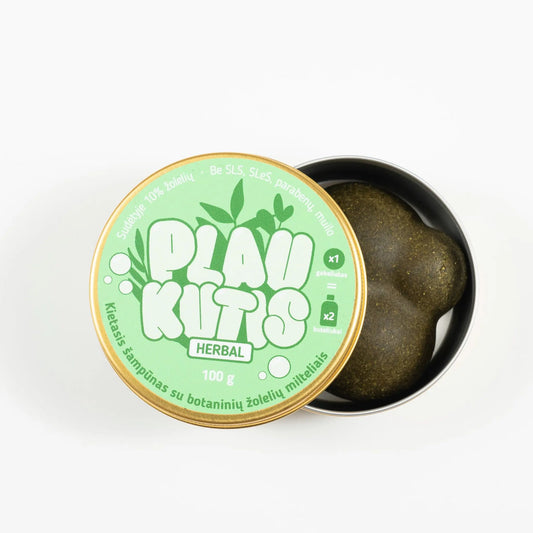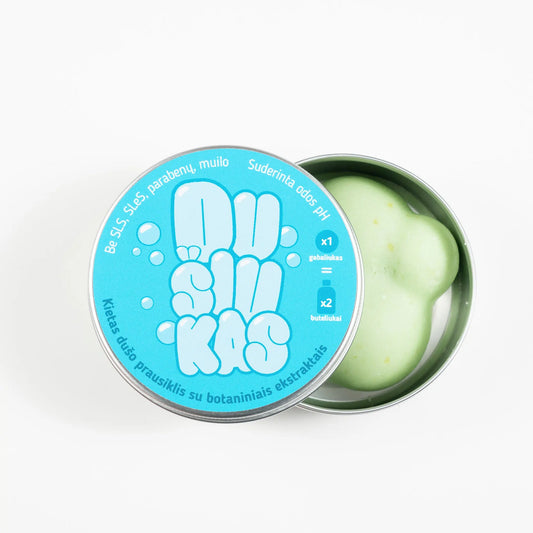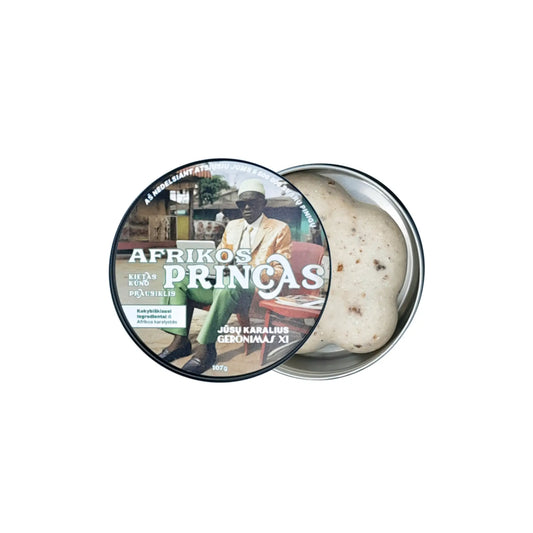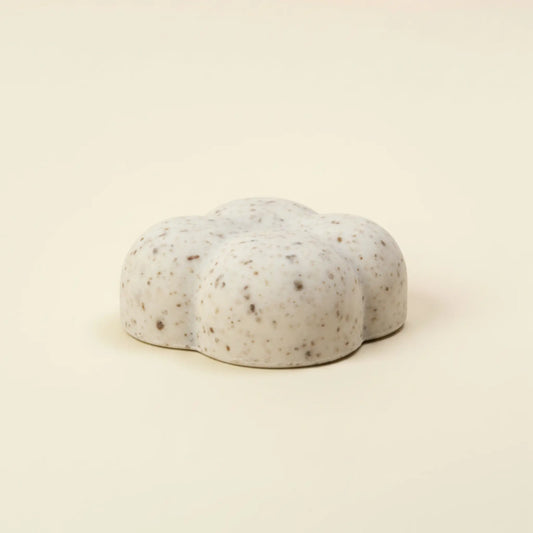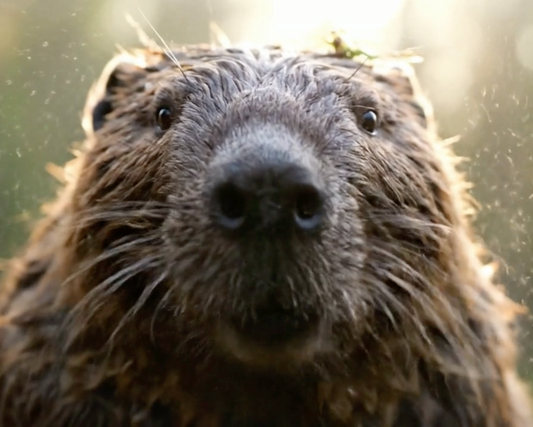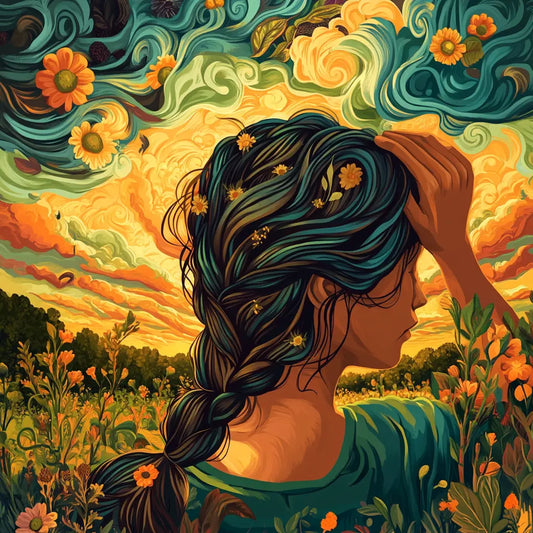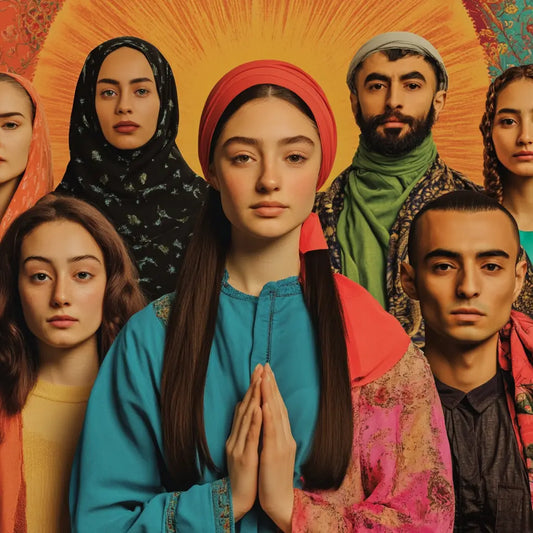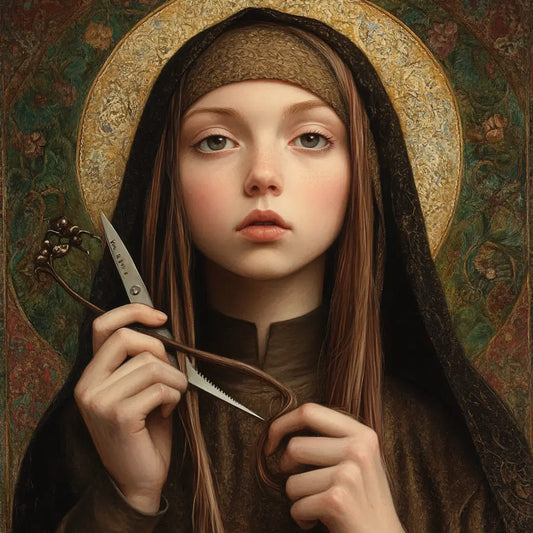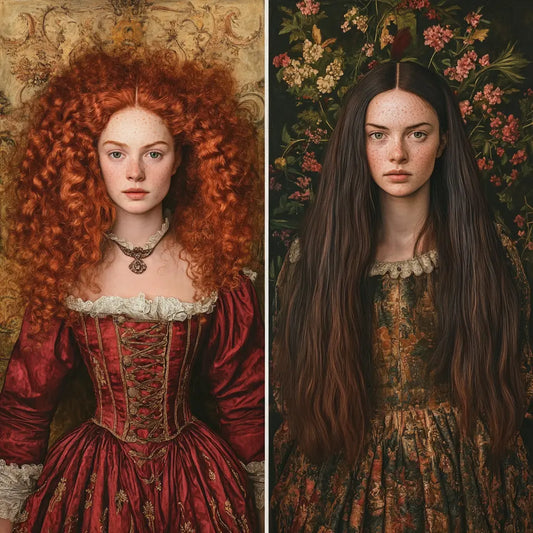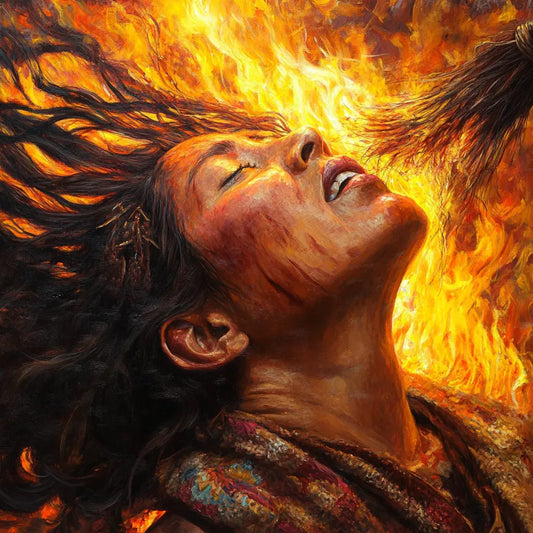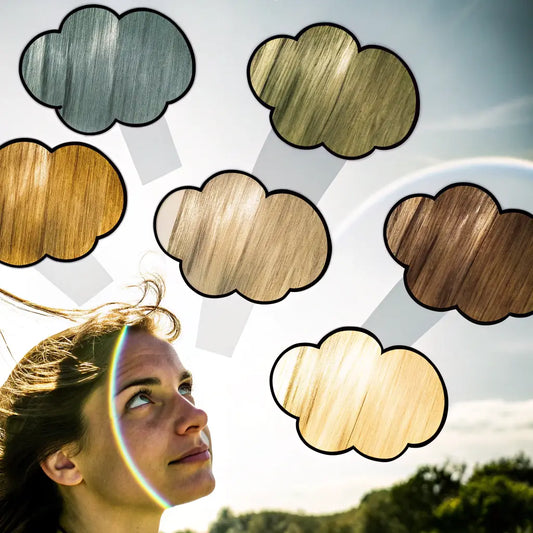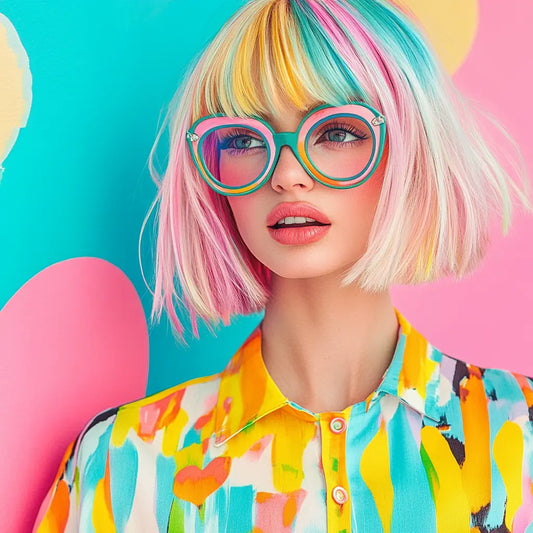In Africa, hair has a deep cultural and spiritual context that goes far beyond its purely aesthetic function. Hair here reflects identity , status , and spiritual beliefs . The meanings of hair styles in many African peoples are symbolic - they can indicate age , marital status , or tribal affiliation . These styles are often associated with ancestral connections , spiritual rituals , and even strengthening community bonds . Hair in African traditions reflects the continent's deep cultural heritage. In this article, we will look at hair rituals from various regions of Africa, providing unexpected facts, research, and interesting insights into these practices.

Hair as a reflection of identity and status
In African societies, hair is a reflection of personal identity, social status, and stages in life. Hair styles can indicate age , marital status , wealth , or even political views . For example, the Himba tribe in Namibia use their hair, and more specifically, intricate braiding and the use of red ochre, to signify important life stages. Young Himba girls wear two braids, called ozondato , which symbolize youth and innocence , and as they mature, a braid covering their face symbolizes their readiness for marriage.

- Fact: The Himba tribe's red ochre paste, called otjize , is not only a cultural symbol but also a practical way to protect hair from the sun and insects. Interestingly, the paste contains butterfat and ochre , which the tribe believes symbolizes a connection to the land and ancestors .
The Fulani people of West Africa are also famous for their elaborate hairstyles, adorned with beads and cowrie shells. These hairstyles signify everything from fertility to social status . Fulani brides often wear elaborate hair styles to signify their maturity and suitability for marriage.
- Number Insight: The cowries used in Fulani women's hairstyles are a symbol of wealth and prosperity . Cowries were used as currency in West Africa in the 16th and 17th centuries. Fulani brides' hairstyles can have anywhere from 20 to 100 cowries , symbolizing the family's wealth and social standing.

Hair styles in some African nations have also been political symbols. During colonialism, certain African hair styles were banned by European colonizers because they were seen as symbols of resistance and African pride. For example, Bantu knots , which originated among the Zulu people of South Africa, were seen as a sign of African identity and strength.
- Fact: Historical records show that in the 1930s, South African authorities banned several African hairstyles, including the isicholo , a cap-like hairstyle worn by Zulu women, in an attempt to suppress cultural expression. In response, many women continued to wear these styles in secret, furthering their cultural resistance.
Spiritual and ritual hair practices
In Africa, hair has deep spiritual significance, as it is often considered a bridge between the living and the ancestral world . In some West African traditions, hair is believed to carry a person's spiritual essence , and specific rituals are performed before important life events such as birth , marriage , or death .
In Yoruba culture in Nigeria, hair is associated with the Orishas , the deities. Women's hair is often styled in elaborate braids to honor certain deities in religious ceremonies. Hair is also offered as an offering to secure the gods' protection, blessings, or assistance. For example, during rituals to the deity Shango , worshippers often wear braids or plaits as a sign of respect and devotion.
- Fact: A 2015 study published in the Journal of African Religious Practices found that over 65% of Yoruba religious ceremonies involve participants wearing specific hairstyles to show their devotion to the gods. These hairstyles are often worn for up to 30 days , symbolizing a spiritual commitment.

In Ghana , among the Ashanti people, hair plays an important role in funeral rituals. It is believed that before burial, hair must be carefully braided or combed to ensure a smooth journey into the afterlife. Uncombed hair is considered disrespectful and can cause unrest in the soul of the deceased.
- Insight by the numbers: A 2019 survey in rural Ghana found that 70% of Ashanti families participate in hair braiding rituals, believing that poorly maintained hair can bring bad luck to the living upon death.
The Maasai people of Kenya and Tanzania also perform hair-shaving ceremonies at important life milestones. When Maasai boys reach adulthood and are circumcised, their heads are shaved as a symbol of rebirth and renewal . When Maasai warriors (called Moran ) complete their warrior training, their long tresses are symbolically shaved, marking the transition to elder status.

- Fact: Maasai warriors grow their hair throughout their service, which can last up to 10 years . Their long tresses symbolize strength and courage , and shaving them off signifies the transition to adulthood.
In some African cultures, hair is also used to communicate with ancestors . Among the Mursi people of Ethiopia, hair braiding is part of a funeral ritual, symbolizing a connection with ancestors. For women who have experienced loss, their hairstyles become a symbol of their spiritual connection with the deceased.

- Research Insight: A 2018 study by anthropologist Lucy Gomez revealed that among the Mursi people, 75% of women use specific weaving techniques during times of bereavement to honor deceased loved ones and ensure their memory is preserved in the ancestral world.
Community aspects of hair care and hairstyles
In African cultures, hair care is not just an individual activity – it is a community activity that strengthens social bonds. Women often gather together to braid or style each other’s hair, a process that can last for hours or even days. These gatherings are not just about hairstyles – they are a space for storytelling , learning and strengthening community bonds .
- Fun fact: In rural African communities, hair braiding sessions can involve an entire village. This tradition, known as "oral braiding," links the creation of hairstyles to storytelling, allowing cultural stories, values, and lessons to be passed down from generation to generation. It is estimated that over 80% of rural African women learn their cultural heritage and values through these braiding sessions.

In many African cultures, elders play a significant role in teaching the younger generation the art of hair care. This tradition is particularly strong among the Zulu and Xhosa peoples of South Africa, where girls learn from their mothers and grandmothers to weave intricate hairstyles that have deep cultural meaning. Braiding is considered a sign of womanhood.
- Insight by the numbers: A 2020 study in South Africa found that 85% of rural Zulu and Xhosa women learned traditional weaving techniques from their mothers or grandmothers. These lessons are considered important for maintaining cultural identity and strengthening family bonds.
In urban African communities, salons have become modern community gathering places for hair care. These salons are not just places to get a haircut – they are social spaces where women gather to share stories, provide support and connect. For many women, spending an entire day in a salon becomes a ritualistic experience .

- Fact: The hair care industry in Lagos , Nigeria, generates over $3 billion annually, demonstrating its cultural and economic importance. Salons are not only places to enhance beauty, but also places where social connections are made and cultural knowledge is exchanged.
Myth busting and interesting facts about African hair traditions
- Myth: Traditional African hairstyles are only for women.
Fact: Many African men also wear culturally significant hairstyles. For example, Maasai warriors grow long braids during their warrior phase, symbolizing their battle readiness and strength. - Fun fact: Dreadlocks, often associated with Jamaica, actually originated in ancient Africa . The Nazirites of ancient Ethiopia wore dreadlocks as a sign of spiritual devotion, a practice that has been around for thousands of years.
- Myth: African hair is difficult to maintain.
Fact: While African hair textures vary, traditional methods such as braiding , twisting , and the use of natural oils like shea butter make it easy to maintain and protect it from environmental damage. - Fun fact: In Nigeria, Igbo women used to adorn their hair with glass beads called jigida , which were considered symbols of good luck and fertility. This practice was especially common during wedding ceremonies.
- Myth: Braids and braids are just for aesthetics.
Fact: Braids have historical significance. Cornrows can be traced back to 3000 BC , and were used to express tribal identity, age, marital status, and even social class in African peoples.
Practical tips or solutions
Ancient African hair care rituals offer timeless lessons for modern hair care routines. Here are some tips inspired by these traditions:
- Use natural oils: Use natural oils like shea butter , coconut , and argan oils to moisturize and protect your hair. These oils have been used in Africa for centuries to maintain hair health and shine.
- Try protective hairstyles: Braids, twists, and cornrows are protective hairstyles that reduce hair manipulation and protect it from damage. These styles allow hair to grow while protecting it from environmental stressors.
- Create a hair care ritual: Hair care is part of self-care. Make time for hair treatments like deep conditioning, oiling, or braiding. Not only does this nourish your hair, it also provides moments of personal relaxation and care.
- Celebrate your roots: Whether you're wearing traditional hairstyles or learning about your hair history, embrace the cultural significance of your hair. Hair is an expression of heritage, and celebrating it helps maintain cultural identity.

Frequently Asked Questions (FAQ)
1. Why is hair important in African cultures?
Hair in African cultures is a reflection of identity , status , and spirituality . Hairstyles can signify various aspects of life, from age to marital status, and are often associated with ancestral and community beliefs.
2. What are protective hairstyles?
Protective hairstyles such as braids, twists, and dreadlocks protect hair from environmental damage and breakage, reducing the need to frequently manipulate your hair.
3. How is hair related to spirituality in African traditions?
In many African cultures, hair is believed to carry a person's spiritual essence . Hair rituals, such as sacrifices or shaving, often mark important life events and connect a person with their ancestors.
4. Do men also participate in hair rituals in African cultures?
Yes, many African men participate in hair rituals. For example, Maasai warriors grow long braids during their warrior phase, and symbolically shave them off during important life transitions.
5. What natural products are used in African hair care?
The most commonly used products are shea butter , coconut , and castor oils, which have been used for centuries to moisturize and protect hair.
Conclusion
Hair in African folklore is more than a physical feature. It is deeply connected to cultural identity , spirituality , and community . From intricate braids that symbolize status to spiritual rituals that honor ancestors, African hair traditions are an integral part of the continent's cultural heritage. These traditions continue to inspire modern hair care practices, offering valuable lessons about self-expression , community, and spiritual connection .

